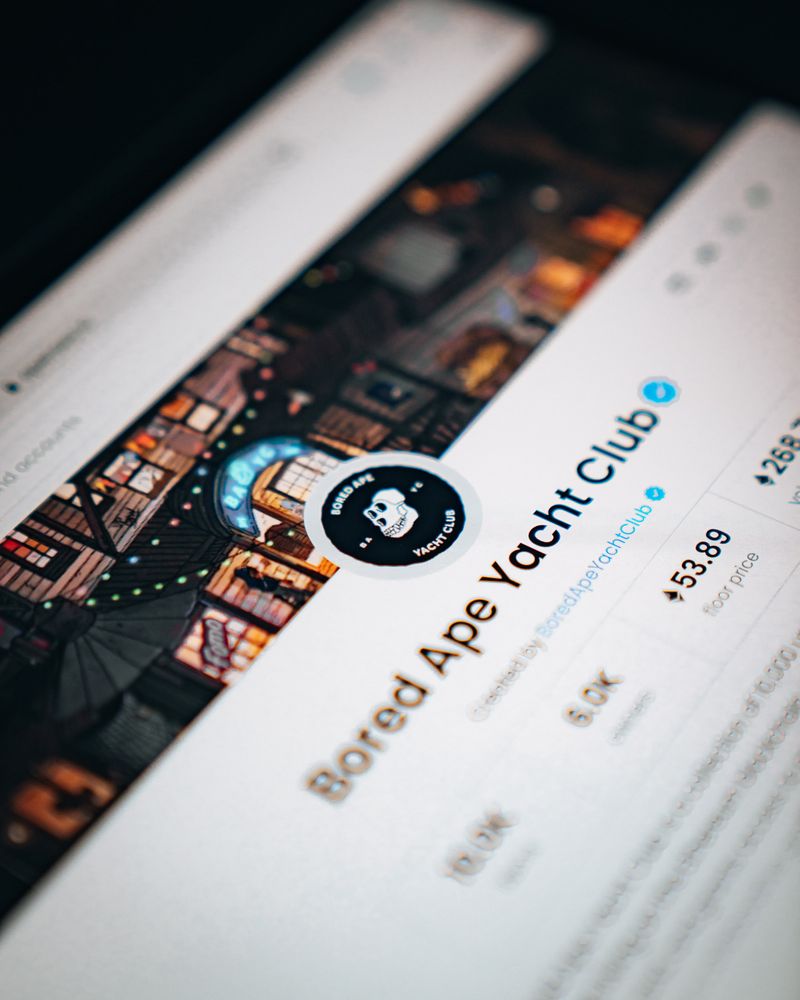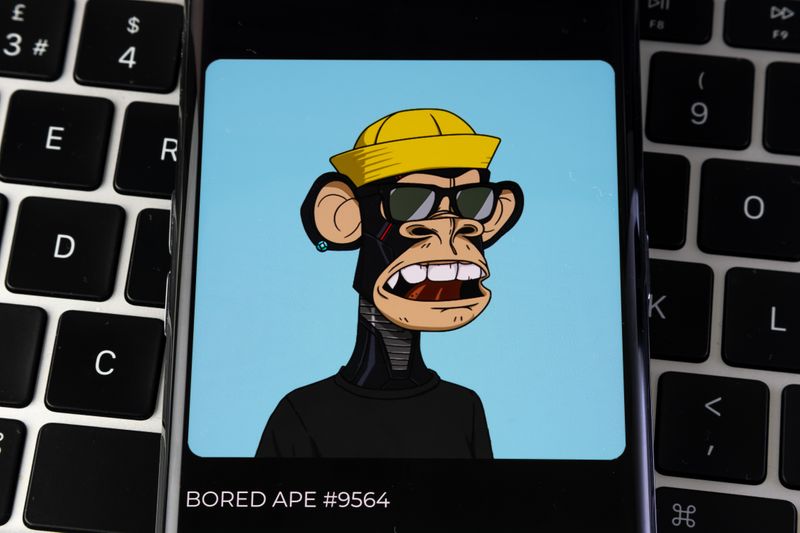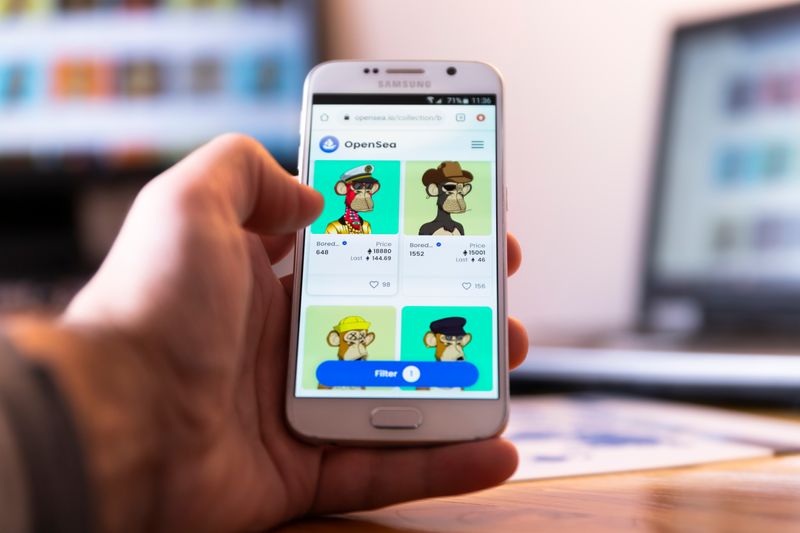Dubai: When it comes to the usual bustle of crypto-related trends, you may have seen pictures of cartoon apes pop up everywhere lately and wondering what they were. Here’s all you need to know about this current craze.
Bored Ape Yacht Club (BAYC), or often colloquially called Bored Ape, is currently a wildly lucrative non-fungible token (NFT) collection of 10,000 Bored Ape NFTs (unique digital collectibles) built on the Ethereum block-chain.
Explained: What are NFTs and block-chains?
NFT or a Non-Fungible Token is a fancy way of calling a unique digital collectible that you can prove is yours. NFT sales had a breakthrough year in 2021, and over the past 12 months, volume has hit $24 billion (Dh88 billion).
Technically speaking, a NFT is a unit of digital data stored on a block chain – a form of digital ledger – that can be sold and traded online. Types of NFT data units may be associated with digital files such as photos, videos, and audio.
Meanwhile, a block-chain is a digital ledger whose access is distributed among authorised users. This ledger records transactions related to a range of assets, like money, house, or even intellectual property.
The rich and famous bet big on Bored Ape
As more famous people buy in, that fixed supply of only 10,000 is perceived as becoming more and more valuable. In its initial run, the company BAYC made around $2 million (Dh7.35 million) selling Bored Ape NFTs. From there, prices just went on up.
Renowned UK auction house Sotheby’s recently sold a set of 107 apes for over $24 million (Dh88 million). Companies were also buying Bored Ape NFTs, with global sports brand Adidas buying a Bored Ape NFT in September 2021. Celebrities have been collecting these NFTs in late 2021 and early 2022.
Eminem, Gwyneth Paltrow, Shaquille O’Neal, Snoop Dogg, Mark Cuban, Post Malone, Stephen Curry, Paris Hilton, Jimmy Fallon, and Serena Williams are among various celebrities noted to have purchased Bored Ape NFTs.

What drives up the price of Bored Ape NFTs?
The short answer is that, as with real-world art, value is very much in the eye of the beholder. What makes Bored Ape or any other NFT collection valuable is highly subjective. Broadly, it’s a mix of three things: influencer or celebrity involvement, community strength and usefulness for owners.
• Influencer involvement
When famous people own an NFT, it makes others want to own one too. An example is Jimmy Fallon, the popular US talk show host, bought a Bored Ape NFT in November for $145,000 (Dh532,585) and for weeks after he used it as a profile picture on Twitter, where he has 50 million followers.
This, alongside other influencer or celebrity promotions, brought a flurry of hype and sales, which is reflected in the sales volume and price. The price of the NFT grew steadily from April to July before rocketing upward in August.
• Utility for members
Most NFT projects claim to offer a utility of some sort, be it access to play-to-earn games or the option to stake an NFT in exchange for an associated cryptocurrency.
Bored Ape Yacht Club has organised meetups in the US, in New York and California, and there have been Bored Ape get-togethers in Hong Kong and the UK, too. In November a weekend of festivities for owners was held in New York, featuring an actual yacht party and a concert that featured celebrity appearances.
• Community strength
Art of any kind is worth only as much as people are willing to pay for it. In an NFT collection, the floor price is essentially equal to what the least-invested members are willing to sell for.
People believing they’re holding a token into a community results in fewer people listing their Bored Ape NFTs for sale. Selling your ape isn’t just selling an NFT, but a community pass too. Plus, once a collection reaches a certain level of value, it becomes a status symbol.
Why are some Bored Ape NFTs more valuable than the others?
What makes some Bored Ape NFTs worth more than others is that it all comes down to a mixture of traits. The Bored Ape NFT collection consists of 10,000 apes generated at random. That means trait assignment, including eyes, fur, and clothes, varies wildly from ape to ape.
Each NFT corresponds to a cartoon ape customised with unique colour schemes, facial expressions, and outfits. (One, for example, is brown, clean-shaven, wearing sunglasses; another is leopard-print, with a rainbow-colored grill in its grinning mouth.)
The ‘bored apes’ with traits in low circulation tend to get valued highly, while those with a mixture of common traits are less so. But apes can remain valuable even with a high trait count (the number of different traits an NFT has).

How are these Bored Ape NFTs created?
These profile pictures of cartoon apes are procedurally generated by an algorithm. US-based Yuga Labs is the parent company of Bored Ape Yacht Club (BAYC). Yuga Labs, which is one of the savviest marketers of NFT brands, was founded by US-based childhood friends Wylie Aronow and Greg Solano.
Bored Ape NFTs, like other NFTs, are created and used for digital art purposes that aim to provide its owners the original digital artwork. Bored Ape NFT owners are essentially in possession of a unique unit of data recorded in a digital block-chain, which permanently records its provenance or sales history.
Bored Ape NFTs were originally sold for 0.08 ether each, around $190 (Dh697), at the time of their April 2021 launch. Now the minimum cost of entry is 94 ether, or about $288,000 (Dh1.1 million).
What are Bored Ape NFTs used for?
The NFTs dually function as a membership card to the Bored Ape Yacht Club, meaning the owners of a Bored Ape NFT are granted access to a private online club, exclusive in-person events, and intellectual property rights for the image.
As the name suggests, the Bored Ape Yacht Club is billed as an exclusive society or social organisation, and owning one of the coveted NFTs unlocks that membership. It earns users access to an exclusive server, for example, where fellow owners – including celebrities – hang out and chat.
Membership to the club also includes access to a digital graffiti board. NFT holders also have full commercialisation rights to their Bored Ape NFT, meaning whoever owns a Bored Ape NFT can spin it into whatever film, music, television, book, or media project they want, its website noted.
Owning a Bored Ape NFT also earns you access to additional NFT collectibles, which can then be resold for potentially considerable amounts of cash. It’s almost like paying a one-time fee for an ongoing subscription plan for NFTs and related perks.
How do I buy a Bored Ape NFT?
To purchase a Bored Ape NFT, you will need to go through OpenSea, an online NFT marketplace. Here’s how to buy one.
• Open an online account with any crypto exchange. (Since the NFT is hosted on the Ethereum block-chain, you must have adequate Ethereum in your online wallet to purchase the NFT.)
• Download a crypto wallet to link with OpenSea and store your Ethereum.
.
• Send Ethereum to your crypto wallet.
• Once you have enough Ethereum in your wallet, log in to your OpenSea account.
• Click on ‘buy now’ to make the purchase of your desired Ape – be it Bored Ape NFTs or others.

ApeCoin: What is that and why is there a fuss about it?
Alongside Bored Ape NFTs, a new cryptocurrency, ApeCoin, is also currently the talk of the town. ApeCoin was also created by Yuga Labs. The coin’s launch on March 17 initially gave away 15 per cent of the total supply of 1 billion as a free bonus to current Bored Ape NFT holders.
This resulted in a predictable sell-off of freebies at launch, which meant that ApeCoin saw considerable price volatility on exchanges. Its value surged to $40 (Dh146) before dropping to around $8 (Dh29). Most recently, ApeCoin’s value surged again to around $14 (Dh51), following a successful investor funding round by Yuga Labs.
As Bored Ape NFTs quickly gained traction and morphed into the exclusive membership ecosystem it is today, ApeCoin is the crypto token used for governance and transactions within the ecosystem. Holders can participate, transact with other participants and gain access to exclusive ecosystem services, games events and items.
How many ApeCoins are there in existence?
Yuga Labs has capped the supply of ApeCoin at 1 billion tokens, minted all at once, which are following a roadmap of gradual unlocks over a 48-month window.
150 million tokens were transferred to holders at launch, while a total of 470 million will be allocated for general resources for the ecosystem. 117.5 million ApeCoins were unlocked initially, while 7,343,750 ApeCoins will be unlocked every month over four years.
Yuga Labs received 150 million tokens, which have a 12-month lock-up before 4.1 million tokens are unlocked every month for three years. A further 140 million tokens were allocated to launch contributors with varying token minting schedules, while the founders will share 80 million tokens.
Will the price of ApeCoins rise further in 2022?
The price of ApeCoin is currently trading around the $14.87 level, following its listing on major exchanges earlier this month. Given that the coin has just entered the market, the price is still finding its feet and creating structure.
However, if APE continues trending in this manner, analysts evaluate how the coin could reach $50 by the end of 2022. By 2023, they expect additional use cases to be implemented that give ApeCoin real utility. With that in mind, our ApeCoin forecast for 2023 predicts the coin could reach the $90.
ApeCoin is expected to become ingrained into numerous metaverse projects over the next two years, increasing its demand from investors. If that occurs, we estimate that ApeCoin could be valued at $135 by the end of 2024.

Verdict: Do Bored Ape NFTs or ApeCoins have a future?
Bored Ape NFTs is evidently dominating the crypto headlines in the digital space, given the fact that many high-profile names now own one of these premium digital assets.
Additionally, the recent release of ApeCoin has added another Ape-based asset to the crypto market, which several crypto analysts opine that it could have massive potential in the future.
With a market cap of $3.8 billion, ApeCoin is already one of the more valuable digital currencies. But the question on everybody’s minds is that is the coin just the latest meme coin or will its bold ambitions catapult it even higher?
The future of ApeCoin may be bright, analysts add, but it seems as if currently prominent cryptocurrencies like Ethereum, Decentraland, and Terra are already mastering areas where ApeCoin wants to be in a couple of years.
The NFT market is currently red hot. If the market corrects soon, floor prices will likely go considerably lower for NFTs, including Bored Ape NFTs. Buying a Bored Ape NFT as a single owner has profit benefits, but buying collectively spreads the risk amongst the group.
If you’re not keen to spend a fortune on an ape, you can become part owner of one via fractional Bored Ape ownership. There are several platforms available for users to take part in fractional NFT ownership.
Whether you opt for fractional ownership or choose to go it alone, the Bored Ape NFT market is very competitive, so be ready for a bidding war.

No Comments Yet